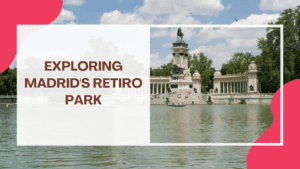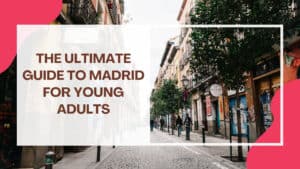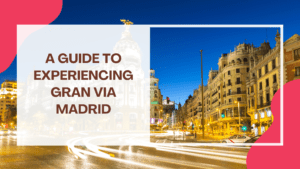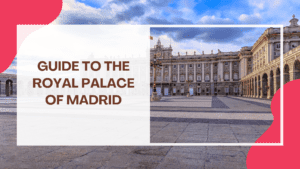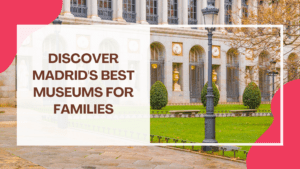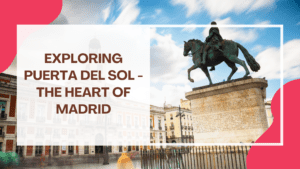Your Guide to Plaza Mayor, Madrid’s Heart, and Soul
Discover the charm and history of Madrid by visiting its most iconic square, Playa Mayor. Nestled in the heart of Madrid’s historic district, Playa Mayor has served as a hub for social and cultural activities for over 400 years. As you step into this stunning open space, you will be transported to a time when Madrid was just a small town on the map. With its breathtaking architecture, quaint shops, and bustling atmosphere, Playa Mayor will enchant visitors of all ages. Whether you are interested in history, art, or simply soaking up the local culture, this guide will provide you with everything you need to know about exploring Playa Mayor and all it offers.
A Brief History of Plaza Mayor
Simultaneously opulent and rough-hewn, with an enormous stature and a looming presence over the surrounding buildings – such is the appeal of Plaza Mayor. Its history stretches back to the glorious reign of Philip III in Spain when it was erected as a testament to the power and resplendence of the Habsburg dynasty. A marketplace by day and a site for celebrations, spectacles, or even executions by night, the plaza has witnessed some of Madrid’s most significant moments throughout history.
Plaza Mayor served as an essential venue for bullfights, jousting tournaments, carousels, and other traditional Spanish entertainment events in its early years. In 1631, however, it witnessed a horrendous tragedy when countless Churchgoers lost their lives in the square during the canonization ceremony of Saint Isidore. As per legend, King Philip IV visited each grieving family personally after that fateful day.
Years went by until Plaza Mayor was reimagined into what we see today: An ornate architectural specimen where winged lions flank the forgotten plaque dedicated to Napoleon Bonaparte’s brother Joseph I. Several notable buildings overlook this central hub of Madrid- Casa de la Panaderia stood on one side with its famous frescoes. At the same time, Casa de la Carniceria managed meat supplies at another end.
Despite being destroyed by fires multiple times throughout history- both accidental and intentional- Plaza Mayor thrives today as one of Madrid’s busiest tourist destinations. Many visitors gather here to browse shops that offer traditional souvenirs like abanicos (hand-held fans), espadrilles (woven sandals), or turrón (nougat). Restaurants abound along the perimeter, where one can enjoy delicious meals while viewing sundry street performers entertaining passersby.
As much about people-watching as it is about learning from guides or online resources, Madrid’s Plaza Mayor remains indispensable as a cultural attraction that spans centuries. It continues to thrive on an ever-changing streetscape scene but never ceases being the social center-point where everyone can come together just as they have since 1590.
Notable Features and Attractions
Plaza Mayor is one of the most remarkable attractions in Spain, situated right at the heart of Madrid. At the center of the plaza is an equestrian statue designed by Pietro Tacca, a famous Italian sculptor, depicting King Felipe III on his horse. The statue characterizes one of the central points of attraction as it tells a story during Spain’s golden age.
Designed by Juan Gómez de Mora, the Plaza Mayor is rectangular in shape with numerous architectural features that represent an array of styles throughout history. The buildings have arched entrances with walkways along their perimeter and are adorned with balconies overlooking a central courtyard. It was carefully constructed to serve as a place for various civic activities such as meetings, markets, and bullfights.
One notable feature of this iconic place is Casa de la Panaderia (The Bakery House) on its northern side. Carlos Franco completed the latest restoration in 1988. Although historically, it housed bakers who provided bread to all areas near it from 1590 until 1819.
Another impressive feature is the Arco de Cuchilleros (The Cutlers Arch), which provides access beneath buildings to lead up to Plaza Mayor through steps and arches restructured by Juan de Villanueva towards modernization in 1790.
A crucial point to note while visiting this magnificent plaza is Chocolateria San Gines – open since 1894 – serving delicious and famous churros alongside their signature thick and rich hot chocolate. It is a short walking distance of two minutes from the plaza.
Juan de Herrera also designed several elements featured within Plaza Mayor, including lanterns mounted over gateways in each section around its perimeter that illuminate significant events held there late into the night.
Besides housing these past iconic buildings and statues honoring Spanish royalty and legends alike, Plaza offers visitors an authentic taste of Spain today. Artisan stalls line some parts offering artisan goods: handmade lace tablecloths or jars filled with locally produced honey or preserved nuts.
One of the important cultural events within the walls of Plaza Mayor is Feria de San Isidro- a two-week-long festival featuring bullfights, live music performances throughout, and street performers showcasing their talents, attracting crowds from afar. Its openness to newcomers interested in art and culture means anyone visiting Madrid has reason to spend their evenings at Plaza Mayor.
The annual Christmas Light-Up event attracts visitors from all over Europe who flock to witness its magnificent showcases resembling fairyland settings with colorful bulbs decorating trees lining both sides of this large square. Churros stalls can be found around these markets during winter- it counts as one of the 20 things you should do in Madrid during Winter.
Plaza Mayor remains a symbol of Madrilenian identity; head there any day past midnight, even today, and it’s brimming with life as young men who have just graduated high school show off their decorated t-shirts to reveling crowds cheering them on. By capturing snapshots highlighting human emotions like happiness or bewilderment – one cannot miss experiencing fond memories and photographic opportunities galore when visiting this iconic landmark which resonates with local spirits from all walks of life.
Exploring the Surrounding Areas
As you set out to visit the iconic Plaza Mayor in Madrid, it would be a missed opportunity not to venture further into the surrounding neighborhoods. Take a stroll down Calle Atocha, situated adjacent to the plaza and lined with numerous restaurants and shops waiting for you to discover. Follow this street as it leads you to another popular tourist attraction, Puerta del Sol, which features Calle Mayor among its highlights.
Continuing down Calle Atocha, you’ll come across the medieval neighborhood of Lavapiés. This lively and multicultural barrio boasts various restaurants offering ethnic cuisine from all over the world. Additionally, various small shops sell handmade crafts and unique souvenirs, making Lavapiés a must-visit destination.
Another neighborhood worth exploring is Calle Botoneras. Located just north of Plaza Mayor, this quiet barrio has many buildings built in the early 1900s with stunning architecture that reflects Madrid’s history. The interspersed boutique shops offer visitors plenty of opportunities for shopping and sightseeing while enjoying the area’s charm.
Visitors can also walk down Paseo del Prado to see some grand structures located near esteemed museums such as Museo Nacional del Prado and Reina Sofía Museum. In addition to these museums, Paseo del Prado features breathtaking cafes such as Café de la Princesa, whose interiors are adorned with antique decor.
Visiting Mercado San Miguel provides visitors with an experience like no other! Built in 1916 exclusively for trade with livestock San Miguel Market was flatly remodeled into the historical architectonic design by Mercádo San Miguel, who encourages customers to create their meals on-site using premium quality products, including vegetable fruits and meats, etc., top quality foods at every corner!
The Royal Palace, one of Madrid’s most iconic landmarks, is another must-visit destination that should not be missed. Located just a short distance from Plaza Mayor, the palace showcases the opulence and grandeur of Spanish royalty with its stunning architecture, gardens, and art collections.
In conclusion, when exploring surrounding neighborhoods near Plaza Mayor, be sure not to miss out on places like Paseo del Prado, where several building exhibits timeless treasures aligned for merry-making, or sites located off-beat paths like Calle Botoneras and Lavapies featuring historic pastures with modern delicacies perfect for an immersive vacation experience.
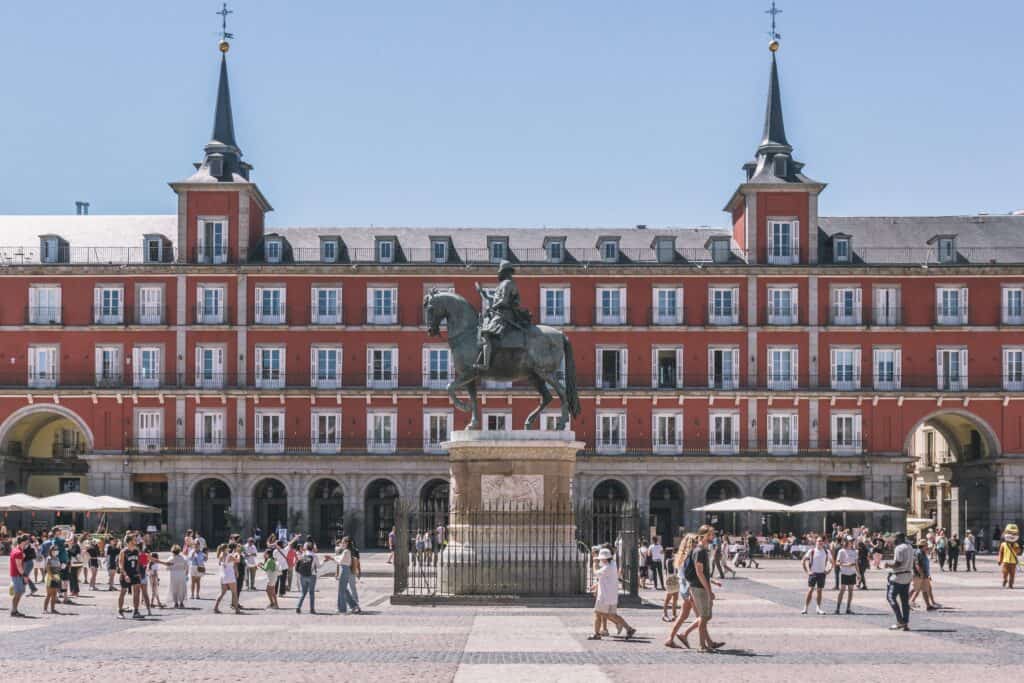
Tips for Visiting Plaza Mayor
Firstly, wear comfortable shoes, as you’ll be walking on cobblestone streets and may spend most of the day on foot. It’s also advisable to bring sunscreen and water during summertime, as Madrid can get particularly hot.
Another recommendation is to arrive early in the morning or later in the afternoon to avoid larger crowds. This will give you more space to stroll around and appreciate the many historical landmarks throughout the square, such as Casa de la Panaderia or the Statue of King Philip III.
Consider joining a guided tour if you want insight into Madrid’s rich history. Tours are available in different languages and provide fascinating background information about Plaza Mayor’s architecture, art, and culture.
To experience authentic Spanish cuisine during your stay at Plaza Mayor, heading into one of many nearby tapas bars serving various tasty dishes could be worthwhile. If you want an alternative option for lunch or dinner, numerous traditional restaurants surround the plaza.
Finally, before leaving and wandering over Calle de Atocha towards Puerta del Sol or Mercado San Miguel, closer by is advisable – don’t forget to take some photos from different angles to cherish your memories of this memorable city landmark forever!
FAQ
What are the highlights of Plaza Mayor in Madrid?
Located in the heart of Madrid, Plaza Mayor is a vibrant square with a rich history and culture. One of its highlights is the stunning statue of Philip III overlooking the plaza, along with its distinct architecture that dates back to the 17th century. Visitors can also indulge in authentic Spanish cuisine at one of the many restaurants and cafes or shop for local souvenirs at charming market stalls. Throughout the year, Plaza Mayor hosts various events such as concerts, festivals, and markets, making it a lively hub of activity for locals and tourists alike. It’s undoubtedly a must-visit destination when exploring the city of Madrid.
When was the plaza mayor built?
The Plaza Mayor was built during the Habsburg period between 1617 and 1619. Initially designed as an urban marketplace, it has served many other functions over time. Today, it is a bustling square filled with vendors, street performers, and restaurants offering traditional Spanish fare. Despite being reconstructed several times due to fires and demolitions, the Plaza Mayor remains a must-see destination for Madrid tourists.
What are some events that occur at plaza mayor?
Several events occur on this gorgeous square throughout the year, making it a bustling hub of activity. For instance, during Christmas, Plaza Mayor transforms into one of Europe’s most splendid Christmas markets with a wide range of activities like shopping, ice skating, carnival rides, and live music performances to keep visitors entertained. Other notable events include historic processions during Semana Santa and bullfights during San Isidro Festival. From cultural festivals to carnivals and everything in between, Plaza Mayor has something exciting going on all year round!
What are the best times of day to visit Plaza Mayor?
Visiting Plaza Mayor can be a wonderful experience at any time of day. However, the best time to visit depends on what you want to do and see while there. If you’d like to avoid crowds, visiting early in the morning would be your best bet. For those who want to immerse themselves in the vibrant atmosphere of the plaza, the afternoons are perfect. Don’t forget to stay until evening for an unforgettable view of the plaza’s illuminated buildings! Regardless of when you visit, try some traditional Spanish cuisine at one of Plaza Mayor’s many restaurants and cafes.
Why is Plaza Mayor a tourist attraction?
Plaza Mayor is a popular tourist attraction due to its fascinating history, stunning architecture, and vibrant atmosphere. As one of Madrid’s oldest and most iconic public squares, Plaza Mayor has been an important site for cultural events, festivals, and markets since the 16th century. With its impressive arcades, elaborate facades, and a statue of King Philip III at the center, Plaza Mayor exudes grandeur and elegance. Tourists can also enjoy various activities in the plaza, including dining in traditional Spanish restaurants or shopping at local souvenir shops. The lively street performers and music shows by local artists add to the festive ambiance of Plaza Mayor, making it an unforgettable experience for tourists visiting Madrid.
Do people live in Plaza Mayor?
Residing at Plaza Mayor in Madrid may be a dream for many. Unlike many other capital cities, the central square of Plaza Mayor is surrounded by private residences instead of government offices or staterooms. Today, the three levels of apartments still belong to private residents who possibly own the most exclusive address in Madrid. It’s no secret that living in this prime location comes with a hefty price tag, but those fortunate enough to call Plaza Mayor home enjoy unparalleled access to some of Madrid’s best restaurants and cultural attractions right at their doorstep.
Is the Puerta del Sol the same as Plaza Mayor?
The Puerta del Sol and the Plaza Mayor are not the same, although they are both popular tourist attractions in Madrid. The Puerta del Sol is a bustling square in the heart of Madrid that serves as a transportation hub and is known for its famous clock tower. In contrast, Plaza Mayor is a historic plaza used for bullfights and other public events and now hosts markets and festivals. While both landmarks offer visitors unique experiences, it’s important to note that they are distinct locations with distinct histories and cultures.
Where is Plaza Mayor in Madrid, and how to get there?
Plaza Mayor is located in the city center of Madrid. It can be easily accessed via public transportation, within walking distance from several metro stations, including Sol, Opera, and Tirso de Molina. Visitors can also take a bus to the square or hail a taxi from any part of the city.
What are the best hotels near Plaza Mayor?
For a truly unique stay, consider a boutique hotel like the Petit Palace Plaza Mayor, a pet-friendly hotel with parking. Those looking for a favorite hotel chain may prefer the Eurostars Plaza Mayor. Whatever your preference, these hotels offer superb amenities, service, and prime locations for exploring one of Madrid’s iconic landmarks.
Conclusion
In conclusion, Plaza Mayor is a place that truly captures the heart and soul of Madrid. It’s an iconic landmark with centuries of history and culture embedded within its walls. From the stunning architecture to the bustling atmosphere, there is something for everyone to enjoy. As you explore this vibrant plaza, take in all of its rich beauty and immerse yourself in the spirit of Spain. Whether savoring delicious cuisine, shopping for traditional souvenirs, or simply people-watching, Plaza Mayor offers an unforgettable experience that will leave you with memories to last a lifetime.

